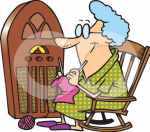2BL Sydney
February
1926, station 2BL, Sydney, carried out tests on approximately 40 metres, from 11 pm to midnight. Ray Allsop was in
charge of operations, and reception reports were sought, especially from listeners in Victoria. This test transmission was
also heard in the USA, with reports coming from as far away as New York.
March 1928
Another dual operation was carried out
from Sydney. The arrival in Sydney of Bert Hinkler's aircraft was broadcast to the world over 2BL on mediumwave, in addition
to the special shortwave transmitter on 52.55 metres, This special dual shortwave and mediumwave coverage was given in association
with Hinkler presence at the Sydney Stadium where the lightweight championship of Australia was being staged.
VK2ME Pennant Hills
September
5 1927
Up in Sydney, a similar operation had been in the planning stages for some time, and, the first Empire Broadcast
program went to air over the AWA transmitter at Pennant Hills, on 10525 kHz (28.5 metres). The program was supplied by the
mediumwave station 2FC (operated by “Farmers”) in conjunction with the Sydney Morning Herald newspaper. This first
Empire Broadcast preceded the Melbourne transmission by a mere two!
October 17 1927.
The 2nd Empire Broadcast Program
went to air from Sydney, and this time it was also radiated on the mediumwave outlet from 2FC. The first program had only
been transmitted on shortwave. The 3rd
October 31 1927
The Third Empire Broadcast program
from Sydney was the result of a special request from the British Broadcasting Company, in London, and was heard "splendidly"
in England. Gerald Marcouse, the British radio experimenter, actually rebroadcast she program back to Australia where it was
widely heard, and it was also received in other parts of the world. Special messages in that program came from the Council
of the NSW Rugby Union, from the Postmaster General, from the NSW Premier (Mr Bavin), and from the captain of the New Zealand
cricket team, Mr T. Lowry (to the Marylebone cricket club).
A feature of this broadcast was the laughing of a pet kookaburra, brought to
the studio for the purpose of "laughing for Britain" by its owner, Mrs W. Clarkson, the origination of the ‘’Jacko”'
call used for introducing Radio Australia's transmissions, and which endured so well for many decades.
Actually, the first "Jacko" for Melbourne first laughed at the listeners early
in February 1928 over 3LO - he also held the title 'Little Master Kookaburra".
The Sydney Empire Broadcast AWA programs also featured the "Cooee" calls, and
were presented by Gratten Smith, which were quite popular and sought after by the British listening audience.
2ME used initially 10525 kHz. In 1930 it had moved to 9615 kHz. It also used
9760 kHz, and was finally used on 9590 kHz.
Programs tor Europe, North America, the Pacific, Asia, in English and other languages
were presented.
September 1928
The power of 2ME was increased to
20 kW. This was the highest powered telephony transmitter in the Southern Hemisphere at that time, and to mark the introduction
of the new transmitter, an internationally important event was broadcast to a worldwide audience. This was the 29th Eucharistic
Congress, held in Sydney, and reception throughout the world was excellent. The programs were also relayed in the USA by station
2XAD at Schenectady, and in New Zealand, and the event was held at St. Marys Cathedral, with massed choirs and a specially
augmented orchestra.
September 1928
The "Listener In" said: “the events of the Congress are now past history, but they all have provided radio listeners with a wealth of
music such as few listeners could have heard in personal and descriptive accounts of ceremonies such as the Eucharistic Procession,
which are not likely to be repeated in Sydney in the life of the present generation".
In Washington, USA, reports
said that the special Congress broadcasts were "a good deal louder than the British Broadcasting Station at Chelmsford, England".
Late 1928
2ME's schedule was on 10525 kHz, on Monday
mornings from 4.30 am to 6 am, with relays of 2FC included at times
1929
A second transmitter
at Pennant Hills was brought into operation with the callsign VK2MA.
1936
2ME operated on 9590 kHz, with programs on
Sundays, 3.30 pm to 5.30 pm, 7.30 pm to 11.30 pm, and on Mondays 12.30 am to 2.30 am. This schedule continued until the end
of 1939.
December 20 1939
2ME was taken over by the Government.

